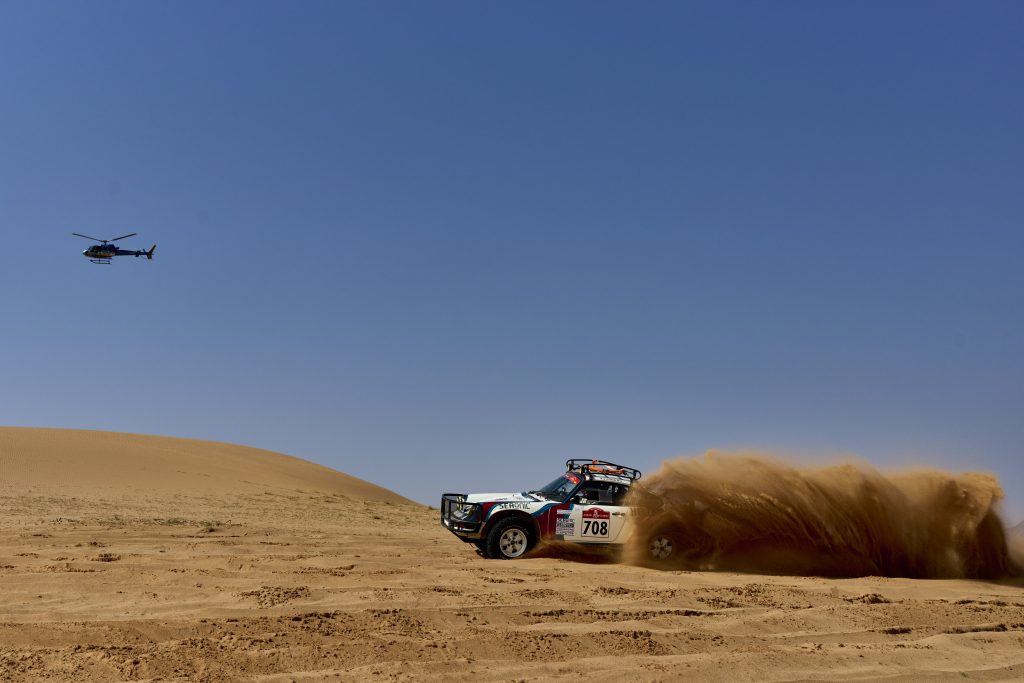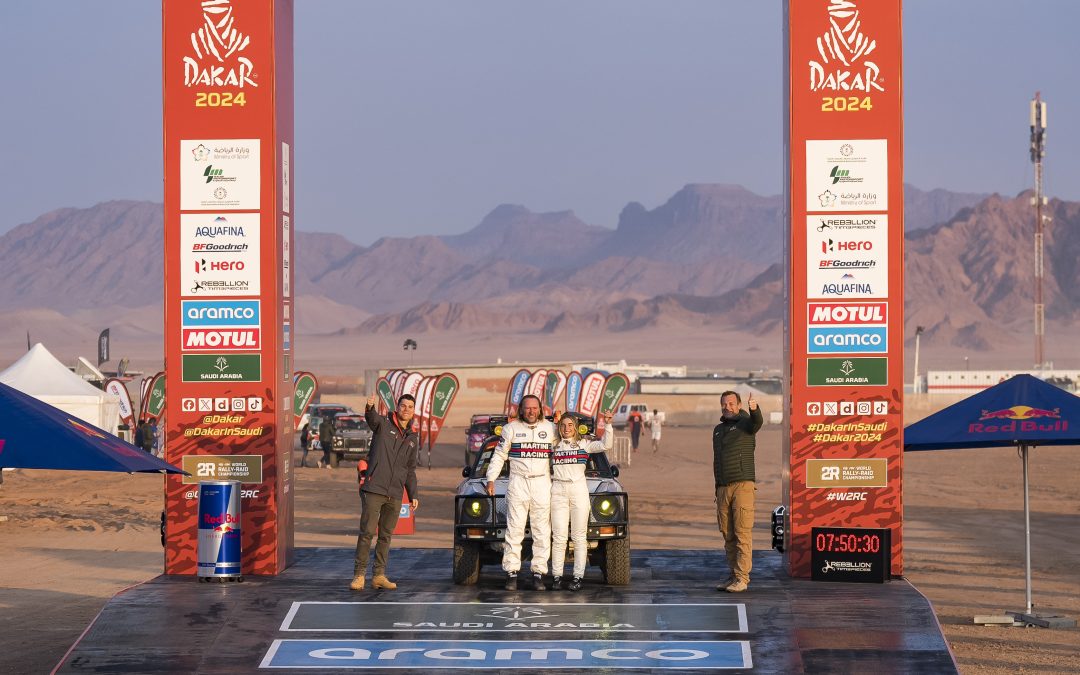Young South African woman racing the Dakar Classic with her father
The Dakar Classic is in its third stage and has thoroughly tested the skills and endurance of its participants thus far. Young Stellenbosch driver Puck Klaassen is transitioning from motocross to four wheels through this event and has faced the challenges of the past three days with a smile!
Puck is racing in Saudi Arabia alongside her dad, Sebastiaan, who acts as her navigator. For both the 21-year-old and her father, it has been quite a journey – even just getting to the start line. The allure of rally racing first captivated Puck during her youthful days of go-karting. Her fascination was reignited during a serendipitous trip to Switzerland where she was introduced to the world of Dakar Rally through a friend. Since then, their journey towards participating in the 2024 Dakar Classic began and eventually led them to acquire a 1986 Porsche 911 3.2L 2WD rear-wheel drive – an iconic vehicle associated with the Dakar Classic.
For Puck, originally from the Netherlands but currently residing outside Stellenbosch, the shift from two wheels to four has been transformative. “Moving towards four wheels has been amazing,” she said. “I always knew it would be cool, but honestly, it’s been the most enjoyable and rewarding sport I’ve ever pursued.”
The Dakar Classic, launched in 2021, features vehicles from the 1980s and 1990s. The format is limited to around 100 crews, all thrilled to share their passion for historic vehicles and their restoration. Replicas of René Metge’s and Jacky Ickx’s Porsche 911s, Ari Vatanen’s 205 Peugeot, and Jan De Rooy’s double-cab DAF truck all enjoy a new lease on life on the Dakar Classic, and the Klaassens cannot wait.
The prologue and first stage were significant milestones for Puck as she embarked on her maiden voyage into the world of rally racing. “Being in the car for such a long time is taking its toll on me,” she shared, exhausted yet exhilarated after completing the challenging leg. Navigating through rough and rocky terrains required careful maneuvering and precise handling.
“I’m just so relieved that everything went smoothly,” Puck exclaimed with gratitude evident in her voice as they encountered no major setbacks or tire punctures, which are rare given such formidable conditions. The stage itself was tough and demanding but brought a great sense of accomplishment for Puck. “Just getting through that stage was incredible,” she remarked, fully aware of the magnitude of the challenge she had conquered.
Her excitement was overwhelming, leaving her lost for words to truly capture the surreal experience of that moment. “I couldn’t be happier,” she said, “I don’t really know what to say!”
While facing some tough moments along the way, Puck found comfort in those fleeting instances of excitement. “I particularly loved the first stage of the race,” she said, describing an exhilarating stretch where they had a helicopter following their every move.
The initial stage came with its own set of challenges; they had to carefully manage time constraints to avoid penalties and navigate through transfer sections known as ‘liaisons’.
According to South African rally driver and vehicle builder Ashley Haigh-Smith, who has been acting as a consultant for the father-daughter team from the start, it is these penalties and ‘’Stage Test Sections’ that set the ‘Classic’ category apart from the Dakar Rally.
“While Dakar focuses on speed and map work, the Classic balances various classes like H1, H2, H3, and H4 based on years and engine sizes,” he explained.
Haigh-Smith emphasized that this categorization ensures fairness. “Each class has an average time for every stage section. The sections include a notebook Test (NT), a digital roadbook Test (RT), a Dune test (DT), and others. Competitors aim to match the recommended average time for each stage to minimize penalties.”
Penalties are applied for every second over the ideal time given per category, with the goal to accumulate the fewest points possible. “In Puck’s case, there was a misinterpretation or you could say a little naivety on our behalf, thinking we only want to go fast. Her car is H2 actually, but we planned to race in H3, which does have its disadvantages against other 4×4 vehicles in class,” he said, adding that the rocky terrain on the first day led to a higher point accumulation due to driving cautiously. “But, when compared to H2 times, they would have ranked much higher in their class due to their performance. On the positive note the decision to stick to H3 has put them in a situation where they start higher in the stage, allowing more freedom. But also allow to push on and gain as much experience for the year ahead.”
As Haigh-Smith mentioned, in contrast to the first stage, the second one brought a whole new set of surprises and obstacles, featuring both fast open stretches and intricate dune-filled landscapes. “I enjoyed stage two even more than stage one,” she said, despite a mishap in the dunes, a glitch in the navigation system, and a temporary setback with a stuck vehicle. It was surprising to her that despite getting lost, their average performance wasn’t as bad as they had anticipated, and she takes this confidence into the rest of the race.
“My goal is not to win necessarily. I just honestly want to finish,” she explained of her goals for the race. “I want to finish with a smile on my face and just enjoy the journey with my dad. That and perhaps gain some experience for more serious rally racing in the future.”
“To do a father-daughter Dakar experience is the most insanely unreal thing that I could ever think of,” Puck said. Stay tuned to Puck’s social channels to follow her Dakar Classic journey and see how she embraces the challenges and thrills that lie ahead.

Published by: Jazz Kuschke
Photography by: Kico Moncada- Kfoto
MSA Publishes media releases from a host of different sources on our website as a service to the sport. It is not practically possible to vet/approve every release that is published. Some news items and articles are written by correspondents and do not necessarily represent MSA’s views.

